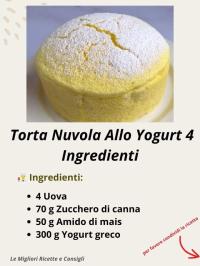Copy Link
Add to Bookmark
Report
Mead Lovers Digest #0067

Mead Lover's Digest #67 Thu 07 January 1993
Forum for Discussion of Mead Brewing and Consuming
John Dilley, Digest Coordinator
Contents:
forever fermenting (Julie Kangas)
Re: Red Star wine yeasts -- comments? (Jay Hersh)
RE: clarifying a ginger mead (John Gorman)
re:apple cinammon mead (R.) Cavasin" <cav@bnr.ca>
re:Red Star wine yeasts (R.) Cavasin" <cav@bnr.ca>
Send articles for submission to the digest to mead-lovers@nsa.hp.com
Send digest addition or removal requests to mead-lovers-request@nsa.hp.com
----------------------------------------------------------------------
Date: Wed, 6 Jan 93 06:57:00 PST
From: julie@eddie.jpl.nasa.gov (Julie Kangas)
Subject: forever fermenting
I made my first batch of mead over Thanksgiving weekend
(using pumpkin pie spices). One week later, the main
fermentation was done and I racked it into a one gallon
secondary. Well, it's still there one month later and
it's still fermenting. About one bubble every 30 to
45 seconds comes out of the airlock and I can see small
bubbles continually rushing upwards through the mead. I used
a yeast nutrient and acid blend so I thought the fermentation
should be through by now. (I also used 3 pounds of honey
per gallon and Epernay wine yeast.) Should I just wait longer?
Or should I use yeast hulls to try to get it fermenting
faster? It's still very cloudy.
Thanks,
Julie
------------------------------
Date: Wed, 06 Jan 1993 11:57:41 EST
From: Jay Hersh <hersh@expo.lcs.mit.edu>
Subject: Re: Red Star wine yeasts -- comments?
I have used the Red Star Epernay in both meads and hard ciders
with nothing but excellent results. I used to use the Pasteur Champagne
but found it finished too dry. I have also heard good things about the Prisse
de Mousse....
JaH
------------------------------
Date: Wed, 6 Jan 93 17:55:56 EST
From: john@rsi.com (John Gorman)
Subject: RE: clarifying a ginger mead
rcd@raven.eklektix.com (Dick Dunn):
>
> I've got a ginger mead ... which seems not to want to clarify and
> settle out. I used a lot of chopped ginger in it, but most of
> that has been filtered out. It's just cloudy.
I had good results with a Barkshack Gingermead that just wouldn't
clarify. I used Bentonite, a form of clay used for clarifying wine.
Got it at the local brewing supply shop.
Boil 2 cups of water in a saucepan. While boiling, slowly sprinkle
and stir in 5 tsp of bentonite. Cover and let stand for 24 hours.
Add during racking.
> I tried one fining with gelatin (standard brewing approach) and
> nothing much happened. I might wait a bit and try it again, but
> first I thought I'd ask whether anyone has had any particularly
> good or bad results fining a mead with lots of ginger.
In the case of my gingermead, there was too much cloudy stuff to
flocculate out in one application. The second time that I racked
with bentonite, a miracle happened: the bentonite flocculated
immediately and was CRYSTAL clear within 15 minutes. I may
experiment with a larger dose next time and see if it all comes
out in one shot.
-john
John Gorman john@rsi.com
Relational Semantics, Inc. 617-926-0979
17 Mount Auburn Street Watertown MA 02172 USA
Stop software monopolies!
Write the League For Programming Freedom: league@prep.ai.mit.edu
------------------------------
Date: Wed, 6 Jan 1993 16:47:00 +0000
From: "Rick (R.) Cavasin" <cav@bnr.ca>
Subject: re:apple cinammon mead
Joe Kazura asks for advise on his apple cinammon mead:
First off, I'm assuming you are making a 5 gallon batch.
5 lb of apples doesn't strike me as being very much for this size
batch, (will give you less than 1/2 gallon of juice) but you do
say you want a light apple/cinammon flavour.
Heating the apple juice and/or the pulp above 160F will likely 'set'
the pectin. I think this is a process of denaturing, ie. the pectin
is there, heating beyond a certain temp. induces a change in the pectin
which causes it to form a haze which doesn't settle out easily.
Similarly, heating the honey denatures the proteins in it so that
they form the scum that can be skimmed off the surface. If you are
going to use the pectin enzyme, you don't have to worry about setting
the pectin (that's one of the advantages of using it). The enzyme
itself is a protein, and therefore is also probably heat sensitive,
so you want to add it after you've cooled your must. Since you
are talking about heating the juice/pulp, I'm assuming you have opted
to pasturize them as opposed to using sulphite (or just throwing
them in as is). If you are adding bagging the pulp in an effort to
to get the last bit of flavour out, you will want to pasturize it as
well since it will contain the same critters as the juice.
Based on these assumptions, this is how I would go about it:
1) heat a couple of gallons of water, remove from burner, and stir
in your honey.
2) boil gently and briefly (or just heat to pasturization temp).
skim off all scum.
3) when you done boiling the must, switch off the heat and add your
apple juice (and bagged pulp if desired).
4) check temp., lower by adding cold water if desired. Cover if
possible. After 15min. or so at pasturization temp., cool by
using a wort chiller or set covered pot in a cold water bath.
5) when cool, put in everything in the primary, top up to 5 gallons,
add enzyme and yeast.
6) if stick cinammon is used, the sticks can be withdrawn when the
desired level of cinammon flavour has been reached.
I don't have much experience with cinammon, but given that you don't
want it strong, I would use 1 stick and leave it in till you have the
desired level of flavour. You can always add more in the secondary.
The enzymes will break down pectins in the juice and in the pulp.
This may result in more flavour released from the pulp during
fermentation. I don't know that I would bother with the pulp in
the case of apples. The small amount of extra flavour you *might* get
would be more easily obtained by buying another pound of apples;
apples being cheap compared to say raspberries.
I think messing with the pulp is only worthwhile in the case of
berries that are very expensive or when you are trying to extract
pigments from the pulp (like in the case of strawberries)
Cheers, Rick C.
------------------------------
Date: Wed, 6 Jan 1993 16:47:00 +0000
From: "Rick (R.) Cavasin" <cav@bnr.ca>
Subject: re:Red Star wine yeasts
Brian Smithy asks about Red Star Wine yeasts:
I had the same concern. From what I gather, Red Star wine yeasts
are actually quite good, and don't suffer the same problems that their
ale yeasts appear to. After reading the same article, I came to the
also decided to try the Epernay II. I think the article is
actually rating Red Star Epernay II. What are the chances that another
company puts out something called Epernay II? I've got a batch of
Strawberry Melomel fermenting with it but I haven't tasted it yet so
I can't offer a critique.
Cheers, Rick C.
------------------------------
End of Mead Lover's Digest
************************




















